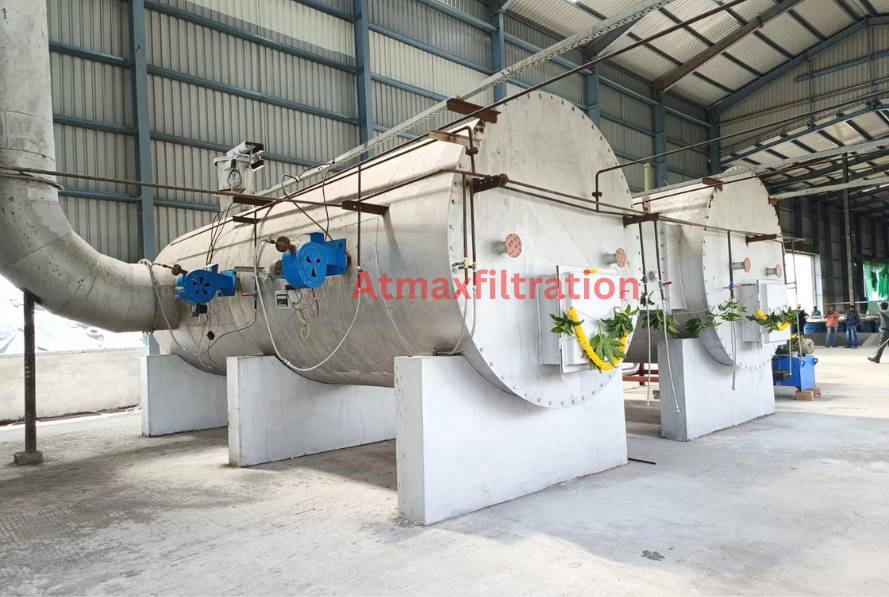Fans play a pivotal role in the operation of hazardous waste incinerators, serving as the driving force behind the essential airflow required for efficient combustion and emission control. These specialized fans are designed to handle the challenging conditions associated with incinerating hazardous materials, including high temperatures, corrosive gases, and particulate matter.
In hazardous waste incineration, maintaining the correct airflow is crucial for ensuring complete combustion, controlling emissions, and preventing the release of harmful pollutants into the environment. The fans used in these systems—primarily Induced Draft (ID) and Forced Draft (FD) fans—must be robust, durable, and capable of withstanding the harsh operating environment.
- Induced Draft (ID) Fans:
- Purpose: ID fans are used to draw out flue gases from the combustion chamber and push them through the pollution control equipment before releasing them into the atmosphere.
- Function: They help maintain a slight negative pressure in the combustion chamber, ensuring complete combustion and preventing the escape of harmful gases.
- Forced Draft (FD) Fans:
- Purpose: FD fans supply the required air for the combustion process by pushing air into the incinerator’s combustion chamber.
- Function: They control the airflow rate, which is critical for maintaining the correct combustion temperature and ensuring the efficient burning of waste.
Considerations for Selecting Fans
- Material: Fans should be made of materials that can withstand high temperatures and corrosive gases.
- Efficiency: High-efficiency fans help in reducing energy consumption and operational costs.
- Control Systems: Variable Frequency Drives (VFDs) are often used with these fans to allow for better control of airflow and energy savings.
Selection Criteria for Fans
When choosing fans for hazardous waste incinerators, several key factors need to be considered:
- Airflow Requirements:
- CFM (Cubic Feet per Minute): The volume of air that the fan can move is critical. It’s essential to select a fan that meets the specific airflow requirements of the incinerator.
- Pressure: Fans must generate the appropriate pressure to overcome system resistance, including the ductwork, filters, and pollution control devices.
- Temperature Resistance:
- Fans must be capable of operating at the high temperatures typically encountered in incineration processes, often exceeding 1000°F (537°C).
- Corrosion Resistance:
- Due to the corrosive nature of the gases produced during the incineration of hazardous waste, fans must be constructed from materials like stainless steel or coated with corrosion-resistant coatings.
- Noise Levels:
- Since these fans can be loud, especially in industrial settings, noise reduction features such as silencers or acoustic enclosures may be necessary.
- Durability and Longevity:
- Given the harsh operational environment, the fans must be robust and durable to minimize downtime and maintenance costs. This includes selecting fans with high-quality bearings, seals, and other components.
Types of Fans
- Radial Blade Fans: Ideal for handling dirty, sticky, or particulate-laden gases.
- Backward Inclined Fans: More efficient and quieter than radial fans; good for systems with low particulate content.
- Forward Curved Fans: Typically used where lower pressures are required; they are quieter but less efficient.
- Tube Axial Fans: Used in systems where space is limited; they are generally more compact than centrifugal fans.
- Vane Axial Fans: Equipped with guide vanes that straighten the airflow, improving efficiency and reducing noise.
Maintenance Considerations
Proper maintenance is critical to ensure the reliable operation of fans in hazardous waste incinerators:
- Regular Inspections:
- Bearings: Check for wear, lubrication, and alignment issues.
- Blades: Inspect for corrosion, buildup of materials, and signs of wear.
- Seals and Gaskets: Ensure that seals are intact to prevent leaks.
- Vibration Monitoring:
- Excessive vibration can indicate issues such as imbalance, misalignment, or bearing failure. Monitoring systems can help detect problems early.
- Cleaning:
- Fans should be regularly cleaned to remove any buildup of ash, soot, or other particulates that could affect performance or cause damage.
- Balancing and Alignment:
- Periodic balancing and alignment of the fan blades and motor shafts help prevent premature wear and ensure smooth operation.
- Replacement of Wear Parts:
- Components like belts, bearings, and blades should be replaced as part of a preventative maintenance program to avoid unexpected failures.
When selecting fans for hazardous waste incinerators, it’s essential to work with reputable suppliers who can provide fans designed for high-temperature, corrosive environments. Choosing the right fan not only enhances the efficiency and safety of hazardous waste incineration but also ensures compliance with environmental regulations by effectively managing emissions and reducing the risk of system failures.

